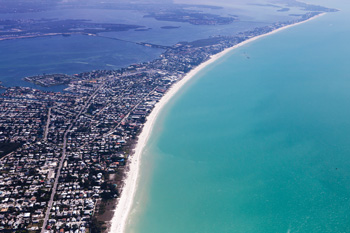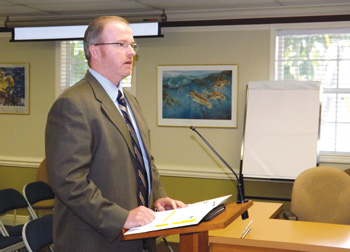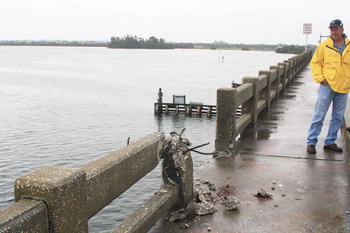
PHOTOSFROMTHEAIR.COM | SUN.
BRADENTON BEACH – Life along the beach is returning to normal this week after the renourishment project ended two weekends ago.
During the nighttime, Great Lakes Dock and Dredge picked up the pipes that ran along the beach and staged its renourishment dredge, generator boat and other floating equipment near Egmont Key. Bulldozers were still active on the beach tilling the sand and knocking down escarpments - little cliffs created by wave erosion.
According to Michelle Pfeiffer, spokeswoman for the project, the final portion of the project along Cortez and Coquina beaches was done in 11 days. They put down roughly 165,000 cubic yards of sand, at a cost of about $5.5 million.
Pfeiffer said the staging area for equipment at Manatee Public Beach should be cleared by the end of this week or early next week.
At the Manatee Public Beach lifeguard tower last Friday, Lifeguard/EMT Roberto Pena and Lifeguard Marshall Greene were keeping an eye on the growing crowd of beachgoers. There was a lot more beach for them to survey.
“They built this sand up so it is higher,” said Pena. “North and south of here, the beach was extended further into the Gulf.”
Jim Romig, of Des Moines, Iowa, was sitting near the, Anna Maria Beach Café where people were lined up for a late breakfast or an early lunch. When asked if he knew about the renourishment, he said yes.
“In fact, it was a renourishment that got us to discover Anna Maria Island,” he said. “We used to go to Lido Beach, and one year they said there would be a beach renourishment so we decided to find another place. We ended up renting a three-bedroom house on Magnolia Avenue for the price of a motel in Lido.”
Romig said he knew something was up when they arrived on the Island.
“I noticed the beach was larger,” he said. “It’s marvelous what you’ve done.”
Romig was at the beach with his wife, Angela, and Jim and Teri Gallagher, friends from the Boston area.
“We come to Anna Maria Island every year,” he said. “It’s our favorite place.”
At Coquina Beach, Capt. Joe Westerman and Rex Beach were manning the tower. They praised the renourishment.
“They did a good job,” said Westerman. “The sand is nice and white, and it’s good quality.
“The jetties that are here are now covered by sand, but they put markers in the sand to show where they are,” Westerman said. “That way the beach cleaner won’t hit them under the sand.”
Westerman said they appreciate the fact that the 17 or so jetties are not exposed.
“Not dealing with rocks and jetties is fine by us,” he said. “Anytime you can cover up a hazard and banish the need of rescues is great.”
“They did a great job,” Beach added.
Len Mangus, who works at the Coquina Beach Café, said he learned a lot about renourishments.
“It’s a big improvement,” he said. “I wanted to know what they were and how long it would take, and now I do.”
Laurie Nichols also works at the café and she was impressed with Great Lakes Dredge and Dock.
“I think they were awesome,” she said. “They were efficient and nice and they did great.”
“People can’t believe the difference,” Mangus said.




